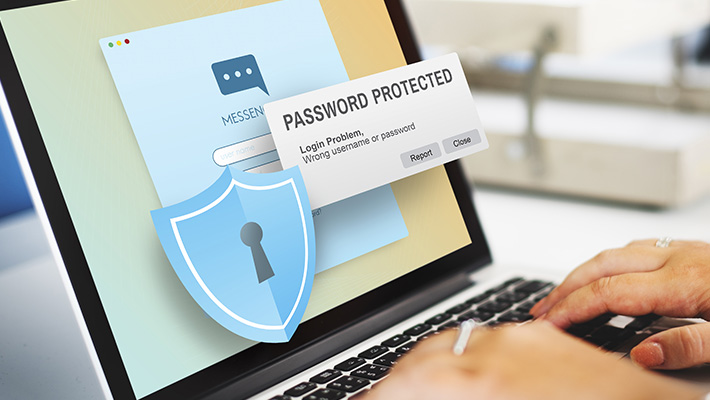
In most cases, you’re unlikely to successfully run two antivirus programs simultaneously on a single computer. Users may be tempted to use what some view as “dual protection.” However, there are good reasons why trying to operate two different antivirus products will normally cause difficulties.
In this article, we’ll talk about why you should reconsider running multiple antivirus programs.
Along the way, we’ll answer the following questions:
- Can you have more than one antivirus program running?
- Is there a problem running more than one antivirus?
- Will running multiple antivirus programs slow your computer?
- Could you run another antivirus for a second opinion?
Is There a Problem Running More Than One Antivirus?
We’ll start with the obvious question: can you have more than one antivirus program running?
The short answer is yes you can, but you definitely shouldn’t run them at the same time.
For effective antivirus detection against computer viruses, worms, Trojan viruses, and more, the antivirus software has to be allowed to penetrate to a suitable level within the computer. This means the software dives down into the system core, known as the kernel.
The antivirus product does this to intercept system events deep within the computer. The intercepted data is then passed to the antivirus engine for analysis. As a result, the antivirus scanner can scan intercepted files, network packets, and other critical data.
If two antivirus programs are running on a single computer, they will each try to install interceptors into the same part of the system kernel. This is likely to result in conflicts between the antivirus monitors—probably with one of the following consequences:
- One of the two antivirus programs will fail to intercept system events.
- Each antivirus program’s attempts to install parallel interceptors will cause the entire computer system to crash.
The above is just one situation you could expect if you try to run multiple antiviruses.
Let’s explore some common scenarios that result from running multiple antivirus programs.
Multiple Antivirus Programs Might Fight Each Other
Antivirus software works a lot like the malware it aims to fight, which is a red flag for any other active antivirus.
The scenario: Malware tends to root itself deep to make fundamental changes to your system files. Also, it tries to spread its corruption so it cannot be easily found and removed.
Antivirus programs know their enemy well enough to spot these suspicious behaviors. It tends to flag non-standard programs that operate with high-level permissions in your system.
For total security, your antivirus software uses high-level permissions to modify suspicious data. It usually cripples flagged data and moves it to an isolated location to keep you safe.
So, behaviors shown by antivirus can easily be seen as a threat to another antivirus program.
The result: Simultaneously active antivirus software might do their best to stop each other. The back-and-forth blocking could cause you to be exposed to incoming threats with no protection.
Multiples Antivirus Protections Might Over Compete Threats
If they don’t destroy each other, dual antivirus programs might play tug-of-war over malware.
The scenario: Imagine that a possible threat has entered your device. With a single antivirus, you’d see the system label and disable this file. Then the program would appropriately quarantine it.
Another antivirus could rediscover the threat attempt to handle it again. The threat is already disarmed in a hidden quarantine location, but a second program would claim the file is still present.
It might just give false alerts, but other cases could see the threat be moved to a new quarantine location. As the file bounces between both software, you’ll have a hard time knowing exactly where to follow-up for removal.
The result: By introducing a second antivirus, you’ve created a redundant cycle that’s a minor annoyance at best. At worst, it could be too distracted to handle other dangers to your device.
In addition, this interference might also trigger in-fighting between the antivirus programs.
So once again, your computer or mobile security will be weaker in the process.
Multiple Antiviruses Might Steal Your Entire System’s Brain Power
You may also be wondering: will running more than one antivirus program slow my computer?
Probably. Running multiple antivirus programs can consume your resources significantly.
The scenario: Each antivirus software will put in its best efforts to combat any threats. Normal protection uses a fair amount of power and performance, but now you’ve likely doubled that.
Antivirus programs use additional memory, processing power, and battery life just to do a normal system scan. Most systems aren’t prepared for the load of an antivirus conflict.
Now consider the power used to fight other antivirus programs and make decisions on previously quarantined threats. Your software will work overtime just to sort out the mess.
The result: In the best case, your system might be slowed down and cause some frustration. Your daily device use will feel inconvenient as the antivirus workload ebbs and flows.
But in worse situations, the sheer power consumed in the battle can cause your machine to seize up and crash. Older or low-end computers freeze more often in these cases.
In either case, you are putting your system at risk as your system’s brainpower is throttled. Threats may go completely unnoticed as they slip past your overworked security. Your computer or mobile device may experience hardware failure, damaging vital data and files.
You’re far more likely to run into problems if attempting to layer your antivirus protection. However, there may be a single situation where multiple programs could be useful.
Running Antivirus Program Scans for a Second Opinion
Second-opinion checkups are just as applicable to cybersecurity as they are in healthcare.
One antivirus program’s judgment can never be foolproof. So, you might be tempted to learn if another software says something different about the security of your system.
Advanced users might choose to have a primary antivirus program and deactivate it when they want to activate a secondary program for follow-up scans.
Using each antivirus program will require that all the others are completely inactive. When a single software is active, it will not experience any disruptions from the other programs.
However, there is a risk of not doing this practice properly. Be honest with yourself about your technical skills and be sure to reconsider if you feel even a little unconfident.
When You Might Consider a Second-Opinion Threat Scan
Antivirus protection is built around each company’s database of known threats across the web.
Threat databases are compiled from dedicated efforts to seek out hazardous code on the Internet. Once the viruses, ransomware, and other data are analyzed, it is added to the index.
Cybersecurity firms use their own choice of methods to build their databases. The company behind your main antivirus may take a different route than other programs.
The quality of each antivirus’ detection is based on how often the company:
- Crawls the web for new and unknown threats.
- Labels these threats and decides the recommended protective action.
- Updates your antivirus program with recent changes to the database.
Also, other detection methods like program behavior can be used differently across programs.
As a result, you may find that some databases handle certain threats differently than others.
However, most reputable antivirus suites update frequently and comprehensively. This means your main choice of software is prepared to handle threats that most people will experience.
If you fall into the bucket of users that do advanced work with cybersecurity, you might consider this dual protection method. Alternatively, you might use this approach if you truly understand the software and have identified a clear need for a second scan.
Why Most Users Stick with a Single Antivirus Program
Of course, anyone running more than one antivirus program assumes the risks. If a program is not fully inactive, it may conflict and cause any number of system hang-ups or damages.
In a worst-case scenario, you may run the risk of irreversibly corrupting data on your device.
Since a “dual protection” method can go wrong easily, the average user would put themselves more at risk. Most users will be fully and safely protected with just a single antivirus suite.
Best practices would suggest that you:
- Always check to be sure that your main antivirus is the only one active. If you’re wondering how to turn off virus detection, your program should have settings to deactivate it. Native software like Windows Defender is already on Windows devices by default and cannot be uninstalled. However, it turns off automatically if another antivirus runs alongside it.
- Only have one antivirus installed to be safe. Most people are better off with just one program. You can usually go into your device’s app manager or control panel to uninstall programs. Removing any extra antivirus software will help you keep a clean, worry-free security plan.
In summary, you’ll find that the best antivirus protection comes from keeping it simple. Pick one great program that you trust and allow it to do what it’s designed to do.
Do you need a new antivirus security solution? DownloadKaspersky Cloud Security Free.
Related articles:

